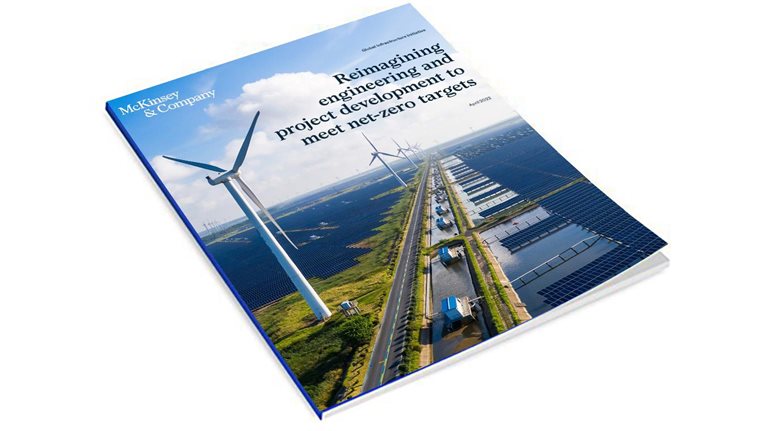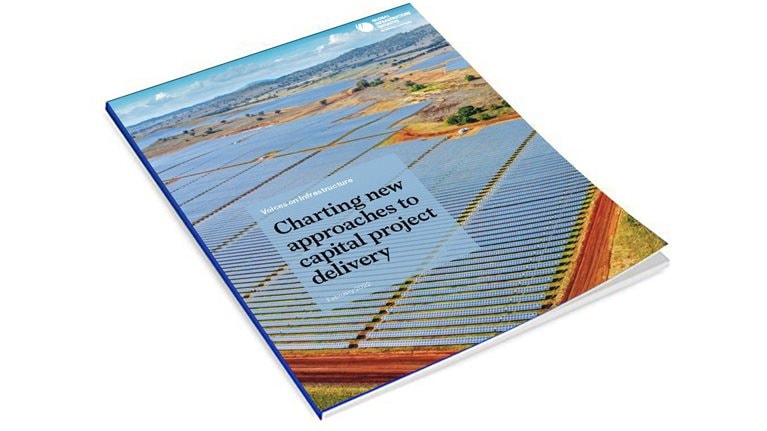The net-zero transition will add an estimated $3.5 trillion a year to global investment budgets, much of which will need to be delivered through the infrastructure supply chain. To increase delivery at the required scale and pace, the industry will need to overcome historic productivity challenges and manage the current supply chain constraints driven by the pandemic and geopolitical instability.
On May 17, 2022, McKinsey’s Global Infrastructure Initiative convened a roundtable discussion in Tokyo titled “Japan’s construction and infrastructure industry: The new normal and the challenge of decarbonization.” The audience comprised senior leaders across engineering and construction, owners, operators, real estate, and technology. The following key themes emerged from the roundtable:
- Japan’s construction industry is on the cusp of transformation. The sector has been largely stagnant for 20 years, with construction productivity lagging at just 0.6 percent a year from 2000 to 2020. Now, new market conditions are driving innovation across areas such as technology, consolidation, productization, and sustainability. McKinsey research suggests that a more productized value chain could create $250 billion to $350 billion in new value by 2035—while also creating risks for players like general and specialty contractors. Already the industry has seen rapid growth in modular, digital, and off-site techniques, reflecting its direction of travel and the potential shifts to come.
- Decarbonization is a key imperative, with pockets of meaningful progress. Buildings affect more than 30 percent of global anthropogenic carbon emissions. Two major green levers are switching to renewable heat sources, such as deploying A2A heat pumps in commercial buildings; and decarbonizing materials, such as optimizing low-carbon materials and reducing demand. Some strategies are already seeing success: one engineering and construction firm reached net-zero emissions on an office building through techniques such as leveraging the natural environment for lighting and heat, generating solar energy, and and producing hydrogen on-site for storage and subsequent use.
- Measuring decarbonization progress is a key challenge. Achieving net-zero emissions by 2050 will require emission reductions by about 90 percent in both the building and transportation sectors. To take practical steps forward, companies will need to accurately and transparently measure and report their emissions data as part of their ESG reporting. Doing this will help the industry establish benchmarks, set realistic targets, and measure progress. While some carbon accounting tools exist, they have yet to be adopted by the industry and used at scale.
- The energy transition presents investors with major opportunities and risks. Approximately $60 trillion of capital will be needed by 2050 to achieve a 1.5° pathway, presenting a huge infrastructure investment opportunity. Hydrogen is a particularly dynamic space, with $160 billion of projects already announced. At the same time, climate change creates new risks for infrastructure assets (such as floods and forest fires), which are often unaccounted for in projects. Investors must also consider the risk of stranded assets—for example, coal plants or gas pipelines that face dwindling demand in a net-zero world. According to the Network for Greening the Financial System (NGFS), $2.1 trillion in such assets could be exposed in the power sector alone.
- While ESG is seen by some as costly, investors are willing to commit capital today. Activist investors are taking action, and nearly $400 billion has been raised in ESG-related funds in the past five years. All investors can consider steps to diagnose their portfolios and gain a clearer view of embedded risks, while positioning themselves as the best partners for developing a new generation of infrastructure assets that are fit for a net-zero future. ESG is primed to become an active value proposition and a key differentiating factor as markets mature.
- Collaborate to drive efficiency across system-level changes. Improving productivity in construction and decarbonizing the built environment will require coordinated collaboration with all stakeholders across the value chain, regions, and sectors to achieve the consensus needed to progress. Strategic partnerships and cross-industry collaboration on capability building, planning, financing, and project delivery could help allocate costs and risks, drive innovation, scale impact, and facilitate aligned policies and regulations.


